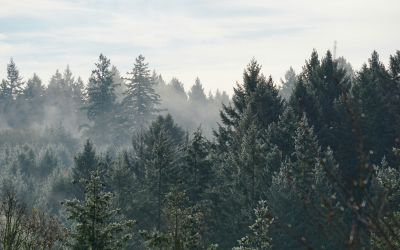Saskatchewan staying on top of climate change
As the United Nations Climate Change Conference in Copenhagen fast approaches, world leaders are grappling with the challenge of developing climate-change policies and progarmmes to reduce greenhouse gas emmssions.
As the United Nations Climate Change Conference in Copenhagen fast approaches, world leaders are grappling with the challenge of developing climate-change policies and programmes to reduce greenhouse gas emissions.
For about 20 years, researchers at the University of Regina, along with government and industry partners, have been developing and demonstrating a wide range of carbon capture and storage (CCS) technologies for reducing carbon dioxide (CO2) emissions from large emissions sources.
CCS technologies are being considered around the world as an important tool for mitigating climate change because of their potential ability to reduce the amount of CO2 emissions significantly and safely.
"Our technology works. It is ready to go to the commercial scale and demonstrate that this is a financially viable option, whether we use the CO2 for enhanced oil recovery or for geologic storage," explains Malcolm Wilson, director of the Office of Energy and Environment at the University of Regina in Saskatchewan, Canada.
"World class research and development is what really sets the University apart from others and positions us as a leader in developing solutions to climate change."
The University has one of the most sophisticated labs in North America (the International Test Centre for CO2 Capture – ITC) devoted to developing and demonstrating carbon capture technologies.
"Our goal is to optimize the CO2 capture process," says Raphael Idem, chief operator of the ITC and a professor in the Faculty of Engineering, "to reduce our environmental footprint and the cost required to capture CO2."
The University's success is built on experience. Since 2000, the University has participated in the International Energy Agency Greenhouse Gas R&D Programme Weyburn-Midale CO2 Monitoring and Storage project – the world's first and largest CO2 geological storage project.
This eight-year, $80 million international project studies CO2 injection and storage underground in depleted oil fields. The project is building the framework to encourage implementation of CO2 geological storage on a worldwide basis.
As of January 2009, more than 14 million tonnes of CO2 has been injected and stored, with approximately 3 million tonnes injected annually.
By the end of its life cycle, the project will have stored approximately 40 million tonnes of CO2 that would otherwise have gone into the atmosphere. This is equal to taking roughly eight million cars off the road for a year.
On May 7, 2009, the Saskatchewan government signed a Memorandum of Understanding between Saskatchewan and the State of Montana to work together to develop one of the largest international carbon capture and storage demonstration projects in the world.
If the Saskatchewan-Montana project, as it is commonly known, moves ahead, it will construct a demonstration capture unit, which will be able to test CO2 capture technology on a scale that is commercially viable. CO2 captured at an existing coal-fired power plant in Saskatchewan would be delivered via pipeline to a geologic storage site in northeastern Montana.
The project is intended to deliver as much as one million tonnes of CO2 over four years of the storage test and would build capacity to test a range of CCS technologies. It will provide a training ground for professionals and students from around the world to develop practitioners of CCS.
The University of Regina hopes to participate in the Saskatchewan-Montana project along with the Government of Saskatchewan and SaskPower in the development of the capture unit. Experts from the Montana University System have been studying CO2 storage extensively and would lead the storage component of project.
"This is a truly international project," says Wilson, "which requires an international set of standards and the framework for safely carrying out CCS projects worldwide."
In November 2008, the International Performance Assessment Centre for Geological Storage of Carbon Dioxide (IPAC-CO2) was created at the University to assess geological storage sites and to assist governments and industry in the development of international regulations for CCS projects.
As an independent body, the centre will provide risk and performance assessment to ensure safe storage of CO2. An international network of experts is being established and currently includes representatives from Brazil, South Africa, China, and India.
Government commitment at the provincial, national and international levels through projects such as these has identified climate change as a priority. It has also helped advance sustainable energy policies for Canada. Saskatchewan is committed to working with government and industry to provide solutions and leadership in the fight against climate change.
Click here to visit the University of Regina websiteSource: University of Regina






